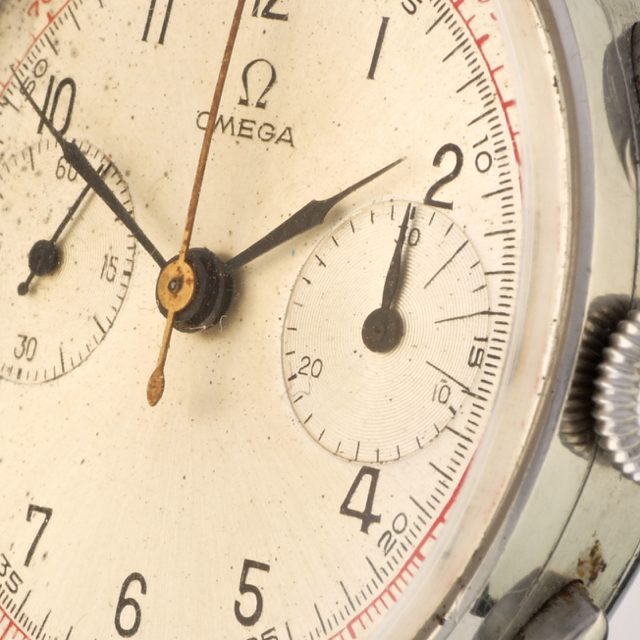
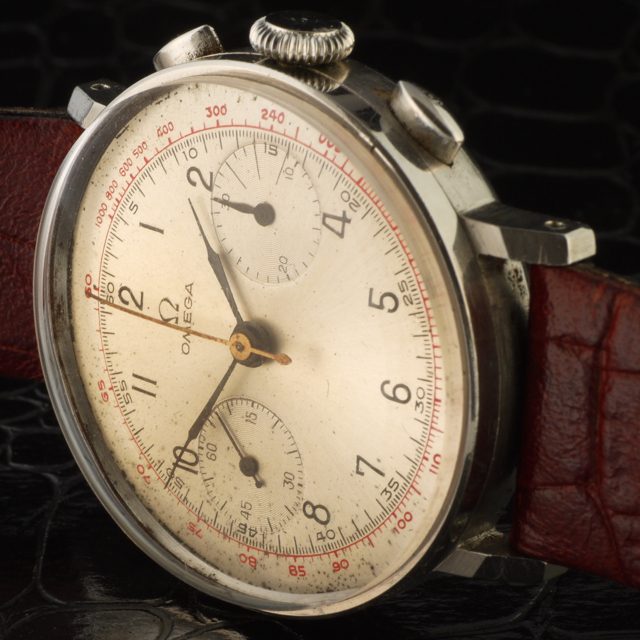
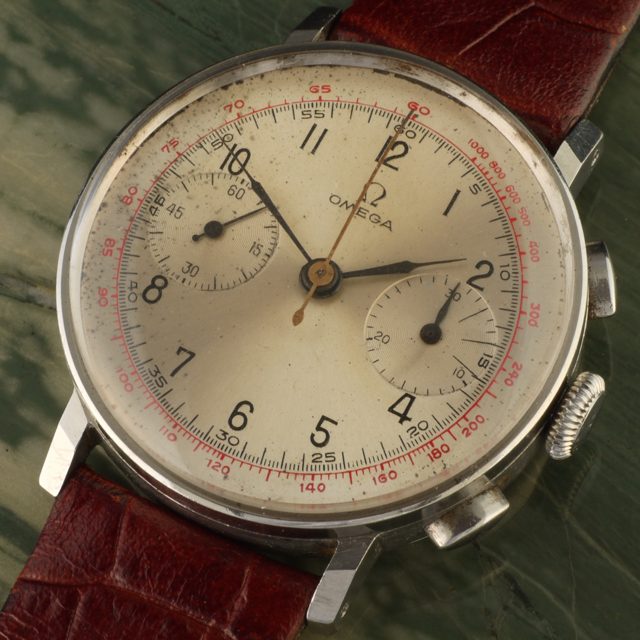
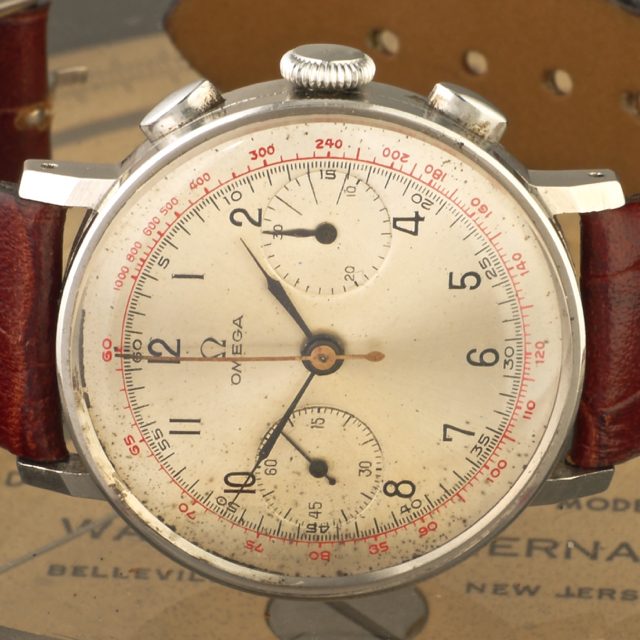
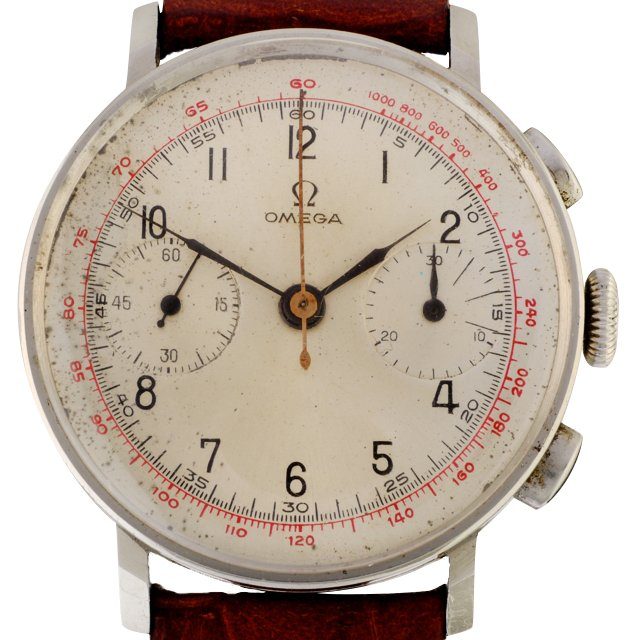
Omega Chronograph Tachymeter
Mussolini is deposed and placed under arrest1943 Omega Chronograph Tachymeter ref. CK 2393, cal 33.3, 37.6mm case, 30 minute counter with 3 minutes indexes for calculating telephone charges, at time billed in 3 minute intervals. The use of chronographs was now not only for military and scientific purposes, but also important for use in motor sports.
The Omega cal. 33.3 chronograph series, which is considered to be a forerunner of the Speedmaster, is one of the most sought-after chronographs by Omega. It is said that only 14,000 movements were produced for 20 years.
A tachymeter scale measures how fast an object is moving. The scale can be found either on the dial or in the bezel. Most tachymeters start at 400 and end at 60, but some models can show different numbers. Its very simple to calculate the speed: just mark a point and push the start button. After the object has moved for one kilometer or mile, push the stop button. The number indicated by the hand shows the speed.
Omega was founded in 1848 by Louis Brandt at the age of 23. The brand’s reputation grew fast and in 1895 the watches achieved a precision of 30 seconds a day.
By the turn of the 19th century Omega was one of Switzerland’s largest watch companies with 240,000 watches produced annually and employing 800 people.
Omega made its debut in sports during the Gordon Bennett international ballooning Cup in 1917; since then Omega has gone on to be the official timekeeper at 21 Olympic Games.
In 1936 Omega set the remarkable World precision record of 97.8 points at the Kew-Teddington observatory in England.
In 1957, with motorsport in mind, Omega launched the Speedmaster, which in 1965 was chosen by NASA as its official chronometer in Space. Four years later the Moonwatch was the first watch to be worn on the Moon, when on 21st July 1969 Neil Armstrong made his giant leap for mankind. Currently Omega belongs to the Swatch Group.
